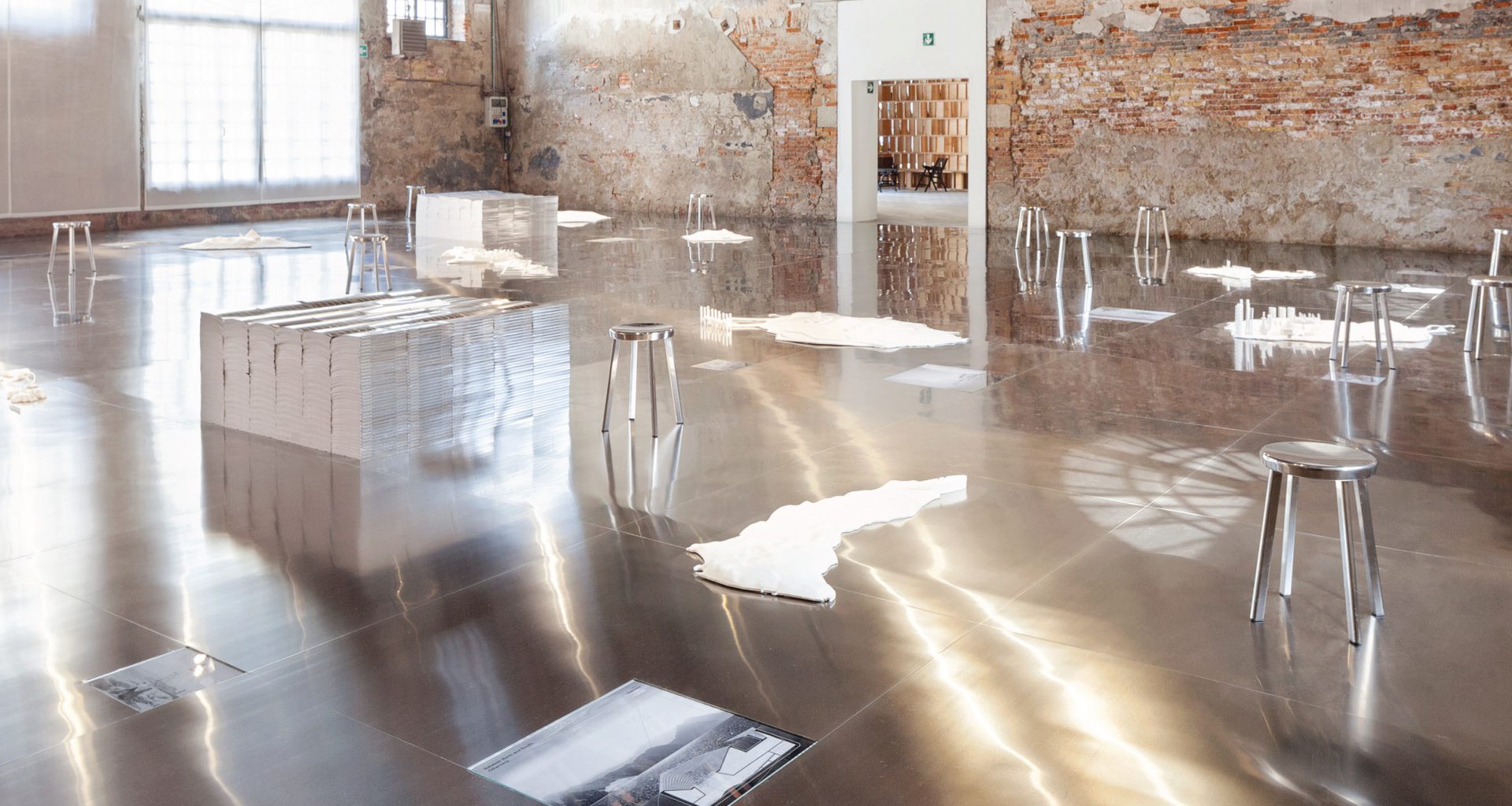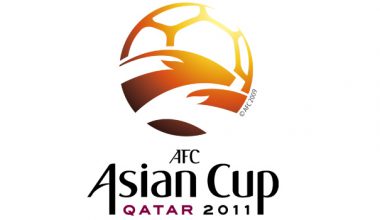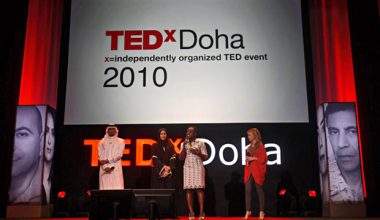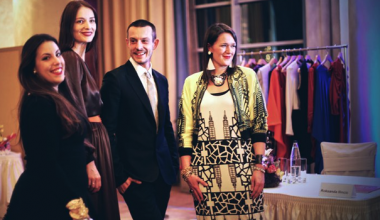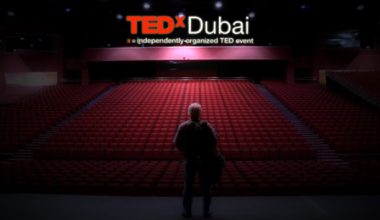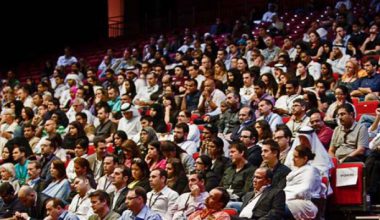The Kuwaiti National Council for Culture Arts and Letters (NCCAL) recently participated in the 15th International Architecture Exhibition – La Biennale di Venezia. The pavilion was titled “Between East & West: A Gulf” and was commissioned by Zahra Ali Baba of the NCCAL, and curated by Hamed Bukhamseen from Kuwait and Ali Karimi from Bahrain.

We had the opportunity to talk with the two curators and find out more about the inspiration behind the pavilion and the future of architectural talent. Answers were co-written by both Ali and Hamed.
What is the significance of this topic and why was it chosen?
Recent contributions by the GCC to the Venice Biennale have served to preserve and discuss the history of the nation-state. Outside Venice however, the nation-state is arguably in its most questionable state ever, not only threatened to be lost but in many ways begging to be forgotten. Thus for this year’s Biennale, the Kuwaiti pavilion asks not how we can reflect on but, how we can imagine a new idea of the Gulf. Building on the past, the pavilion reframes the history of the territory and state as the ground from which a new pan-Khaleeji narrative can be created. A narrative of pragmatic problem solving and looking at the nation-state as an active project. It was chosen because it does several things; it tells a history that is looked over, it proposes new solutions, and it showcases young talent from the GCC.

What role did you personally take within the project?
As co-curators, we began – before knowing we would be doing a pavilion- by having a discussion on the Gulf. The idea for us was to find a new framework through which we could talk about our respective countries (Kuwait and Bahrain), while also strategizing ways to intervene architecturally in them. To understand their built environment, shared relationship and territory, and how we could find a way to break them out of their current trajectories (in a positive sense.) So as curators up until that point, our role was primarily as historians and designers – being didactic and showing the Gulf’s history and proposing new buildings to continue that history down a different path. When we found out we would be doing the Kuwait pavilion our role expanded to a fully curatorial role in which our role was to showcase regional talent and attempt to open up the discussion that we were having, to more people and really make it about a larger communal project.
What is the significance of this exhibition taking place at the 15th International Architecture Exhibition – La Biennale di Venezia?
In many ways, Kuwait represents the growth of the Pan-Arab movement in the Gulf, and ultimately, the demise of nationalist movements in the region, with the invasion and occupation of Kuwait itself. For this reason, Kuwait posits itself as the vehicle to bring about a Pan-Khaleeji discussion on the future of the nation-state and the opportunities for reimagining, reinventing the urban and social landscape of the region. Through the vehicle of a joint master plan put forth by Kuwait, the discussion on the collective history of the region and the possibilities for novel solutions across the Gulf is presented. It was important for us also to show the work of Kuwaiti architects and talents within a larger context – as that not only strengthens the work but enriches the discussion on it as well. For us, when bringing up the topic of Kuwait’s future, it is imperative to mention its greater geographical context and how it communicates with its surroundings. Countries do not operate in isolation, particularly in the Gulf, which shares a collective past, and what we argue is a collective future.

What would you like to see in future Kuwait national pavilions?
This pavilion is the third in a series – it ends the discussion on master plans and nation building in the most optimistic of ways, with a projective rather than reflective proposal. We think the next step should be architectural and precise with regards to buildings. We need to show that we can make good buildings in the Gulf and that requires architectural ambition on a whole new level.
In terms of the logistical portion of the pavilion, it would be interesting to see the pavilions have closer ties to KU by instituting a Venice internship program like the UAE.
Do you see this proposal ever coming to light?
Depends on what you mean by 'come to light.' In a sense it has, at least in the form of the Kuwait pavilion, so for us, that's already a battle won. We don’t think the intent was ever to give a proposal that can be built immediately, our intent was more didactic and critical than that, and to be clear means we have to be more paradigmatic than pragmatic which is the first hindrance to a realisable proposal.

What did you think of other Gulf pavilions?
It's quite clear that it's an exciting time in the Gulf, with a lot at stake and increasingly there are different voices with compelling arguments on what the Gulf is and what its future will be. The recent pavilions mark a turning point after which we think the ability to imagine a future for the cities and territories of the Gulf countries will be a more nuanced and negotiated project; less top down and more contested. It is important to highlight how projective the national pavilions are as platforms – these are not reflective exercises – they are really forward-looking and ambitious. The Bahrain pavilion provided a new architectural language for future projects in aluminium; it asked how we could be more critical of our built environment and as a material project. The UAE pavilion interrogated the idea of the citizen and the home, asking how we can reimagine our cities and housing as an authored exercise with an agenda in mind. It is increasingly clear that local talent is interested in looking forward and building something new, which is exciting. Personally, we're glad that Gulf architects have finally crested the wave of nostalgia for a recent past.
Do you hope to see the Kuwait pavilion continue to foster young architectural talent?
The Kuwait pavilion offers something entirely unique and different from the other GCC pavilions, which is that it has been for the last three iterations; a platform for young and local talent. All the curators have been under 30 years old and Kuwaiti-born, so we feel that it really is an exception to the curatorial landscape of Venice at large. We think this is a tremendous asset to young talent and allows for new generations to cut their teeth and be inventive on the largest stage.

